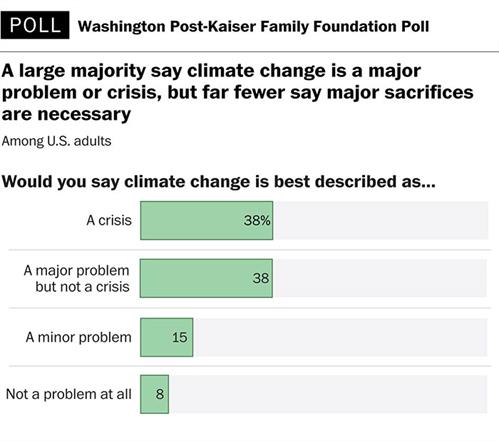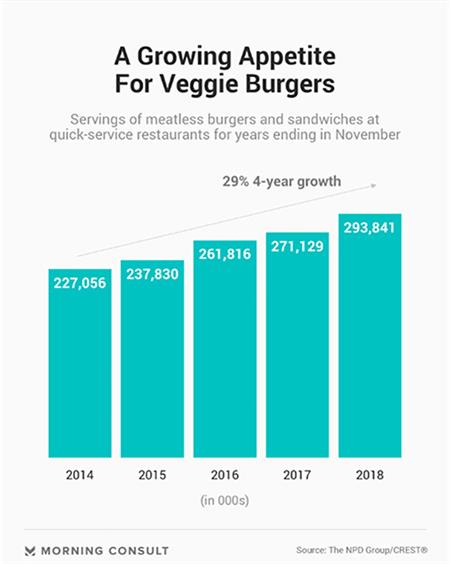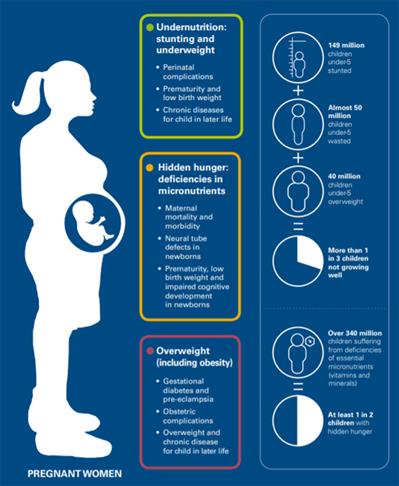Top food and nutrition trends for education and health professionals for 2020.
 Healthy
eating patterns based on traditional food groups are evolving, with the quality of foods taking precedence over single nutrients or caloric quantity.
Healthy
eating patterns based on traditional food groups are evolving, with the quality of foods taking precedence over single nutrients or caloric quantity.As with any science, nutrition science is evolving. In the early stages of nutrition science, the focus was on individual nutrient deficiencies. Then the focus and understanding shifted to the relationship between specific nutrients and chronic diseases such as obesity, diabetes and heart disease. In recent years, nutrition research is increasingly focused on whole foods and dietary patterns rather than single nutrient metrics and chronic disease development. Evidence continues to uncover the multiple metabolic effects of food beyond traditional understanding.
Not all foods within the food groups are created equal. When discussing the quality of foods within food groups, the comparison cannot be of nutrients against nutrients. Foods contain complex structures of nutrients and other bioactive compounds that can be modified with differing levels of processing such as cooking, fermenting, preserving or refining. Within a food group, the quality of foods, impacted by processing and other factors, can fall on a spectrum of how the foods impact health. 1 For example, within the grains group refined starches and sugars such as white bread, refined pasta and many baked goods have been shown to have detrimental effects on health and chronic disease risk. On the other end of the spectrum, minimally processed whole grains have protective effects on health.2 Research is also showing that the health effects of dietary fat are modified by the food source and nutrient matrix it is contained in. Recent evidence has shown that dairy fat has neutral or beneficial effects on cardiometabolic disease risk.3 This may, in part, be due to dairy’s package of beneficial nutrients.
Emerging research on the food matrix is helping the health and research communities understand that the functionality of a food should not be reduced to individual components.4 Additionally, there is a better understanding of how the unique collection of bacteria that lives in the gut, the microbiome, is impacted by dietary intake and how it plays a role in human health. This advancing knowledge of the gut microbiome is driving science to look beyond the traditional nutrients in foods and examine lesser-understood components like bioactives and microbes.
Implication: Overall diet quality matters more than the amounts of calories or single nutrients consumed. For a high-quality diet, research shows that emphasis should be placed on increasing consumption of nutrient-dense, wholesome foods that are minimally processed while reducing consumption of refined starches, added sugars, processed meats and other highly processed foods. High-quality beneficial foods include milk, cheese, yogurt, vegetables, fruits, whole grains, beans, nuts, seeds, fish, lean meat, poultry, eggs and healthy fats and oils. Dietary patterns that include these protective foods as a foundation for healthy eating supports optimal health for all populations.
 Food technology innovations provide opportunities as well as threats to nutritious and sustainable food systems.
Food technology innovations provide opportunities as well as threats to nutritious and sustainable food systems.
Rapid innovation of food products adds another layer of complexity to the shifting knowledge of nutrition. Consumer demands for plant-based alternatives, functional foods and overall novelty are driving innovation and diversification, as well as higher degrees of processing, within the food industry. New products such as pasta made with lentils, dairy milk blended with almonds or oats, and beef blended with pea protein isolate are blurring the lines of traditional food groups, making it difficult to compare foods based on nutrient content alone. High-profile coalitions are attempting to develop new systems to categorize foods based on different measures. For example, the NOVA food classification system aims to rank foods based on the nature, extent and purpose of food processing. Another labeling system, the Physical Activity Calorie Equivalent or Expenditure (PACE), aims to show how many minutes or miles of physical activity are required to expend an amount of calories in a particular food or drink.
Concern around ultra-processed foods is gaining global attention not only among experts in health and nutrition science but also with governments and the media. Ultra-processed foods are highly refined, often with unrecognizable ingredients, and offer little nutritional value. Examples are potato chips, packaged desserts and sugar-sweetened beverages. Researchers are further drawing attention to hyperpalatable foods, characterized by combinations of fat, sugar, sodium and refined carbohydrates designed to maximize taste and thereby increase consumption.5 According to researchers at the Centers for Disease Control and Prevention, about half of the calories Americans consume come from ultra-processed foods, and it is taking a toll on health. Additionally, for every 5% increase in consumption of ultra-processed foods, there is a corresponding decrease in heart health.6 Ultra-processed food consumption has also been found to be associated with all-cause mortality and risk of chronic diseases such as type 2 diabetes.7
On the other hand, technology can provide opportunities for positive innovation in food systems.
With climate change, an increasing population and other growing threats to the global food supply, sustainable solutions are critical for food security and the health of all populations. Technology is being applied to all points of the food supply chain to address issues of food loss and waste, greenhouse gas emissions and food access, leading to a variety of innovations like changes in agricultural management to improve crop yields and changes in food formulations, processing and packaging.
Implication: Technology and innovation tend to move quickly, effectively disrupting systems, often ahead of policy and regulations. Disruption to the food system could potentially have major public health consequences. There is a need for cross-sector collaboration among the private sector, government and academic and research institutions to ensure that the application of technology is safe and provides benefits to communities. Effective solutions will require sharing data and new technologies to help the global food system become more sustainable and efficient while making nutritious food available for all and supporting optimal health.
 Increasingly,
climate-conscious consumers are driving changes in food technology and food marketing, resulting in a significant shift in food products available in the marketplace.
Increasingly,
climate-conscious consumers are driving changes in food technology and food marketing, resulting in a significant shift in food products available in the marketplace. There is an increasing concern among consumers that their food choices will negatively impact climate and the environment. This concern is driving changes in consumer behaviors and the food industry. Individuals are aligning their food choices with their personal identity and values, not just nutrition and taste preferences. Furthermore, consumers expect companies to act ethically and help solve societal issues.8
Climate change is an escalating concern among Americans, especially among younger generations.9 A national poll by The Washington Post and Kaiser Family Foundation showed the percentage of people calling climate change a “crisis” has jumped from 23% to 38% over the last five years.10

Concerns around climate change are driving demand for urgent action, with particular focus on immediate yet simple changes by individuals, including their food choices. Consumers feel empowered to create change in society with their purchases and are not willing to compromise with food companies. Their actions are moving companies at all levels of the food supply chain to align with their values of environmental protection, as well as social justice and animal welfare.11
The rise in plant-based alternatives, particularly red meat alternatives, in the food market is a direct response to consumer interest and demand. This in part is being influenced by the increase in research and public health messaging promoting plant-based diets, and in some cases plant-exclusive, for disease prevention. The share of Americans who consider purchasing from a lead producer in plant- based meat alternatives has nearly doubled in the past year.12 Another survey found that 39% of Americans wished more fast food restaurants offered vegetarian options.13 Established companies that produce and supply animal-sourced foods are also making the move to invest in meat-free alternative products like sausages and patties, recognizing the growing interest. Plant-based meat alternatives are often marketed as part of a climate-friendly lifestyle. However, some experts and scientists warn of a rapidly growing range of new plant-based foods available in supermarkets and designed to look and taste like animal-source products but may not be nutritionally equivalent.14 There is currently a lack of rigorous research and data on their environmental impacts as well as their effects on human health.
Implication: While environmental factors should be an important part of food decisions, it is equally important to consider the nutritional impact on human health. The extent of processing in many plant-based alternative products still has unknown effects on health, whereas strong scientific evidence does show that increased consumption of minimally processed whole foods provides positive health benefits. Health professionals and consumers alike should critically evaluate the health and environmental impact of processed foods, whether they are from animal- or plant-based sources.
 Food
and nutrition education is becoming more challenging as it expands to a more holistic approach, addressing the social, emotional and mental well-being of children.
Food
and nutrition education is becoming more challenging as it expands to a more holistic approach, addressing the social, emotional and mental well-being of children.Health professionals, educators and community leaders are recognizing that addressing children’s health goes beyond meeting their physical needs and must also include their social and emotional well-being, referring to the whole child. Increasingly, health care groups are seeing the negative impacts of adverse childhood experiences (ACEs) on children’s health and how these experiences impact children well into adulthood. Research has shown that children with four or more adverse experiences during early childhood, compared with those who experienced none, had the poorest health outcomes.15
Conditions such as altered nutrition, exposure to environmental toxins and chronic stress can have long-term negative impacts on children’s physical, emotional and cognitive development.
An example of the complexity of food and nutrition education is the rapidly changing food supply and climate crisis which further complicate how the needs of the whole child is addressed. The real and potential consequences of climate change directly impact the health of children and their futures, from exacerbating food insecurity to increasing health risks from poor air quality, severe weather events, and emerging infectious diseases. Nutrition continues to be a key factor in the health of children, but it is also part of the larger puzzle that includes environmental and social determinants of health. Another area of society that impacts the health of children is food marketing. Children, especially those who are from vulnerable communities, continue to be exposed to the marketing of foods that can be harmful to their health. With younger generations’ large online presence, they are receiving information and advertisements about food from more media channels than ever before.
Within the school environment, the wellness of students is evolving to encompass a holistic view to support the whole health of children, beyond just meeting educational standards. Traditional classroom instruction is shifting as evidence continues to support experiential learning and ways to build skills among children. Within the realm of nutrition education this can include cooking and gardening. Social-emotional learning can go hand-in-hand with nutrition education, building in concepts of shared meals, taste and culture. Educators are infusing lessons that connect with the planet to address sustainability, such as studying biodiversity in agriculture and conducting food waste audits to increase awareness of consumption habits.
Implication: The interplay of nutrition with mental health, climate change, food marketing and other social and environmental influences on dietary choices will continue to inform the conversation and education around food. Educating on nutrition is no longer as simple as teaching about a nutrient’s role on physical health; moving forward, it will need to factor in how a changing environment and society impacts health, particularly for children.
 Urgency
is being placed on the importance of optimal nutrition during pregnancy, infancy and early childhood to provide positive, lifelong health benefits that last across generations.
Urgency
is being placed on the importance of optimal nutrition during pregnancy, infancy and early childhood to provide positive, lifelong health benefits that last across generations.Evidence continues to build and show that delivering optimal nutrition for pregnant women, mothers and children from birth through their first two years supports growth, development and other positive health outcomes throughout the life span. The nutritional status set during early childhood can impact health risks into adulthood, including obesity, hypertension and diabetes.16 Yet, despite a robust evidence base defining the nutritional needs of these populations, the health of children continues to be at risk. According to a report by UNICEF, two-thirds of children between the ages of 6 months and 2 years do not get adequate nutrition for growth and development, while one-third of about 700 million children under age 5 around the world present as undernourished or overweight.17 The problems of food insecurity and undernourishment are not only being experienced by developing countries. Affluent countries, including the United States, still have populations of children who experience poverty and food insecurity. Over 16% of children in California under 18 years old live in food-insecure households, and nearly 23% of children ages 0–3 live in poverty. 18
Adequate nutrition not only plays a critical role in physical growth and development of children, but also in cognitive development. In a policy statement, the American Academy of Pediatrics emphasizes that the failure to provide adequate nutrition during the critical period of development in the first 1,000 days of life could lead to lifelong deficits in brain function.19 Emerging research has indicated that obesity during adolescence is correlated with decreased executive function and decreased “integrity” in brain white matter, impacting brain health and function.20,21
New research from the Special Supplemental Nutrition Program for Women, Infants, and Children (WIC) illustrates how investments in social programs that provide access to nutritious food can improve the health of young children and their families. One study found WIC participation reduced infant mortality by one-third during the first year of life and lowered the risk of preterm births.22 These findings are important as babies born preterm have higher rates of death and disabilities.23 Another study found that the prevalence of obesity among children ages 2–4 who were enrolled in WIC decreased from 15.9% in 2010 to 13.9% in 2016.24

Maternal dietary intake is also critical and impacts the health of children. A study found that healthy dietary patterns during pregnancy, with diets high in vegetables, fruits, whole grains, fish and dairy products, were associated with lower risk for preterm births.25 Adequate intake of certain micronutrients is also critical during pregnancy. For example, dietary intake of choline, which is essential to fetal development and brain health, typically falls short of recommendations in North America, Australia and Europe.26 Health experts are bringing attention to the potential risks for women who follow vegan or plant-exclusive diets. These diets may be inadequate in choline as well as other important nutrients like iron and vitamin B12 which are predominantly found in animal-source foods.
Implication: Good nutrition for women, infants and young children can set the foundation for lifelong health. Investments in the health of these populations could significantly benefit whole communities. Health professionals must strive to ensure the needs of all children are met so that they can grow into successful adults who contribute to thriving societies.